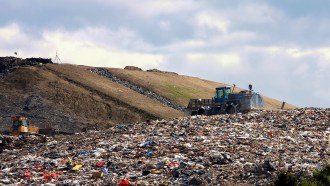
Environment
A biogeochemist is tracking the movements of toxic mercury pollution
Exposing the hidden movements of mercury through the environment can help reduce human exposure.
By Nikk Ogasa
Every print subscription comes with full digital access

Exposing the hidden movements of mercury through the environment can help reduce human exposure.

Using a laser and an electron beam, the microscope can snap images of moving electrons every 625 quintillionths of a second.

An analysis of a university collection found that the vibrant pigments coating some Victorian-era tomes exceed exposure limits for the heavy metal.

The shards contain nine metals that the famous astronomer may have used, including one not formally identified until 180 years after his death.

PFAS, which are found in common products such as cosmetics, food packaging and waterproof gear, have been linked to health problems.

Scientists made the known element 116 with a beam of titanium atoms, a technique that could be used to make the undiscovered element 120.

Hydrogen bonded with sulfur may have given our world its first water after the hydrogen broke away and joined with oxygen in the planet’s crust.

DNA is capable of encoding all sorts of data. Storing it in an amberlike material may keep that information safe for nearly forever.

An analysis of samples from three Florida landfills shows that landfill gas can carry more PFAS than the liquid that leaches from the waste.

In her new book, Arielle Johnson, former resident scientist at the restaurant Noma, explains how to think like a scientist in the kitchen.
Subscribers, enter your e-mail address for full access to the Science News archives and digital editions.
Not a subscriber?
Become one now.